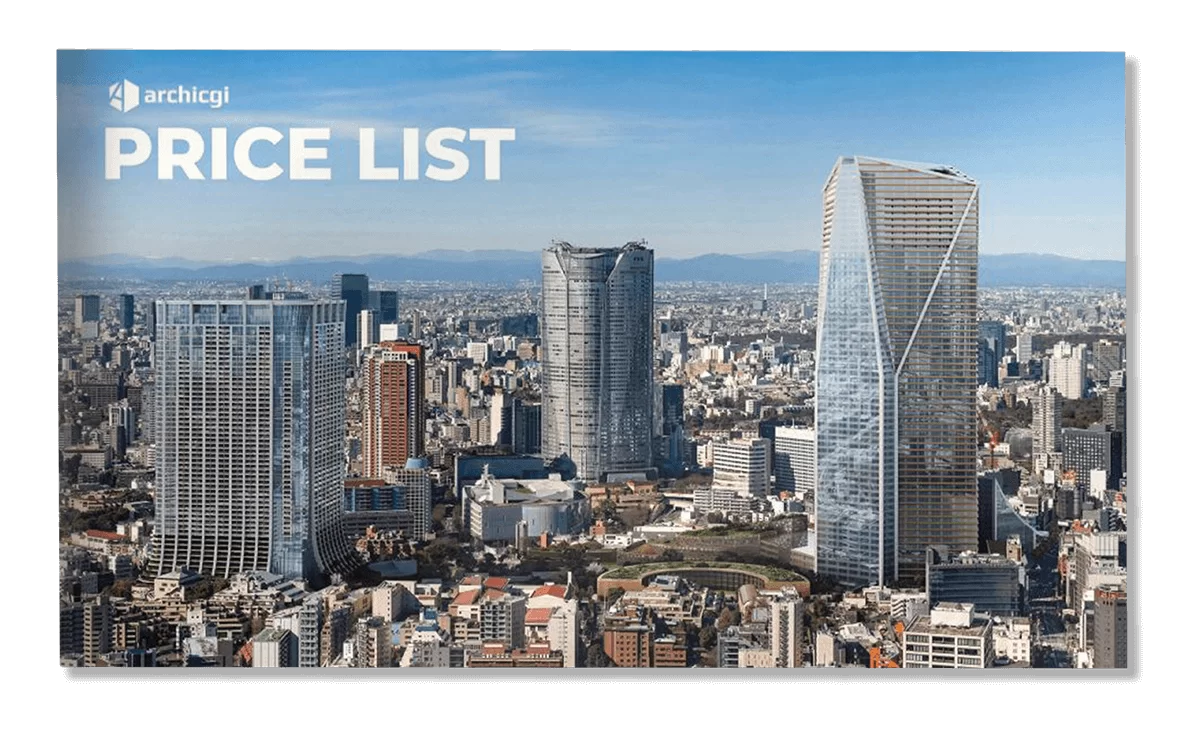Designing buildings entirely in a digital workspace was unheard of even 5 years ago, but today, VR for architecture seems plausible in the near future. Although the technology itself is still in development right now, its capabilities are improving every year. Just as with any future speculation, there are two sides to the virtual reality debate in architecture: supporters and skeptics.
Our architectural rendering company is constantly on the lookout for innovations to help designers visualize their ideas better. And after some research, we are ready to prove that virtual reality is the future of your industry. Join us as we address common misconceptions about VR functionality, explore the latest developments, and see the potential this technology has for all architects.
VR In Architecture: The Future Or A Fluke?
#1. “Isn’t VR still a half-baked technology?”
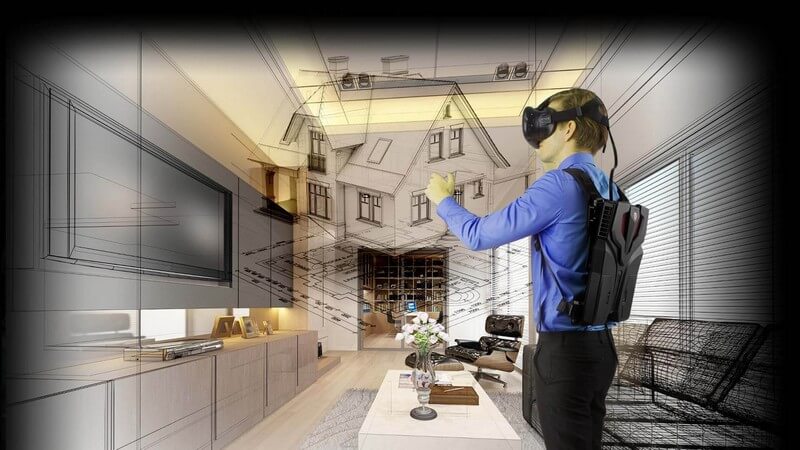
As mentioned before, virtual reality technology is still in development, but it doesn’t mean it’s only making baby steps. Believe it or not, computer engineers invented the first virtual reality gear prototype in 1968 – “The Sword Of Damocles”. Then, the same happened with motion-tracking 360-degree commercial models during the 1990s. Obviously, we have gone a long way from that, with devices such as Oculus Rift, HTC Vive, and many more on their way.
The ways one can interact with the digital world have also gotten an upgrade. Among them are gloves replacing controllers, advanced voice recognition, and precise translation of body movements to a virtual avatar. The quality of visuals has also increased, allowing near-photorealistic graphics. With capabilities like these architecture and VR combination doesn’t seem so far-fetched, does it?
#2. “VR is advertised as a revolution in gaming. How does it benefit architects?”
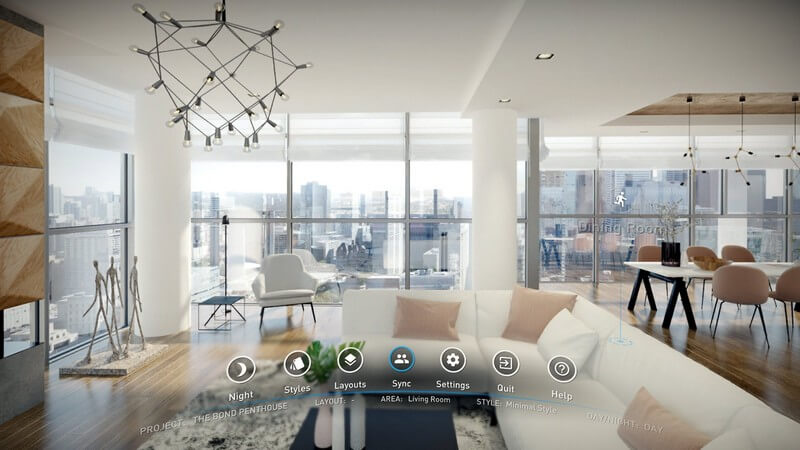
It’s certainly fun to explore digital worlds, shoot guns, or swing swords with your own hands. Players can complete challenges and see how the world around them reacts to every action. However, creating new designs and building future models in VR can save architects a lot of time and effort. It also turns the process into a dynamic and even entertaining experience. No more boring offices, piles of wasted paper, or endless manual calculations!
Take Storyboard VR, for example. It allows architects to prototype designs easily in a virtual space, rotate the scene, and zoom in or out. Or consider Fuzor — it lets users download hundreds of pre-rendered 3D models and place them in any environment with ease. Right now, the most popular engines for VR software are Unity and Unreal Engine. However, they are likely to be replaced soon by more powerful and flexible variants — photorealistic and gorgeous Unigine, or the powerhouse VRSCA. The last allows up to sixteen people to collaborate on one project simultaneously without lag or stutter.
Such software is extremely helpful for large-scale architectural projects. And there are even more tools that can make architects’ work easier.
#3. “Virtual Reality programs so far can only involve one person at a time, right?”

Virtual reality is not just a tool for design visualization – there are a lot of benefits of VR for architectural presentations, too. Respective software and hardware are not just limited to offline functions. One example of this is an experimental project that has become quite popular in the gaming community – VR Chat. Essentially, it involves people from all around the world talking to each other and doing a variety of fun activities within one online chat room via custom digital avatars.
While producing famous memes along the way and having a lot of people who went out of their way to ruin others’ experiences, this experimental game has proven one very important thing – dozens of people can be in one VR environment at once, interacting with one another as well as with objects within the simulation in real time. With this in mind it’s hard to argue that the same can’t be done in architectural presentations.
Multiple people from different places can gather in one virtual space to view, discuss and apply changes to projects on the fly, saving time and being more effective for the final result. Some architectural companies have already implemented “VR Jams” (as in “jam session” in music) in their work routine, speeding up the workflow as well as acting like a good teamwork exercise. It’s not hard to see how architectural virtual reality software will become commonplace in the near future.
#4. “Isn’t VR just another fleeting trend? Can it stand the test of time?”

Most trends are short-lived due to them being essentially a rehash of old ideas – this can’t be said about groundbreaking technological or cultural changes that completely flip the way our life goes on their heads. Saying that VR won’t stand for long is like saying that the invention of radio or television is just overhyped and will be forgotten in a few years at the beginning of the 20th century. Virtual reality architecture is here to stay, and it will be the dominant, if not the only viable way of creating and visualizing new designs.
#5. “VR is uncomfortable – can you use it without accidents?”
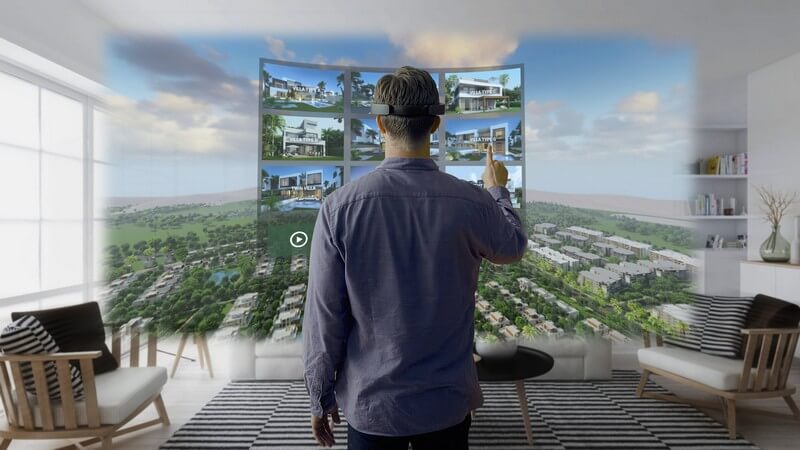
A lot of virtual reality skeptics often bring this argument, and it is valid to some degree. Human body is very sensitive to environmental changes, but, in turn, very adaptable as well. Take a trampoline, for example. At first, jumping makes a person really uncomfortable, but after a few minutes they just get used to it, and they are confused when feeling solid ground beneath their feet afterwards. The same works with virtual reality applications. They visually immerse the user, to the point that virtual hazards can feel just the way real ones do.
For example, a person with fear of heights will be genuinely terrified of virtual heights due to realistic depth of field. But it’s a specific case – VR gear is generally perfectly safe, since it affects only sight as opposed to other senses. Besides, we are talking about VR architecture apps, not action games – there is no need to go up if you can simply resize the digital model of a building. Just make sure there is enough open space around you, so you don’t bump into furniture or walls.
Want to learn how much your project costs? See how we evaluate 3D rendering projects
Right now, we live in an age that features technologies that seemed only possible in science fiction before. And there are a lot more amazing 3D renderings for architects already in development: interactive palpable holograms, seamless integration of 3D models in real life with augmented reality, mass-produced and more affordable virtual reality headsets, omnidirectional treadmills with VR integration, engines realistically simulating all kinds of materials and environments – and this is only the beginning!
Will virtual reality architecture reimagine the industry? It certainly will – and you shouldn’t lag behind. Get high-quality VR-ready 3D visuals for project presentations today with our professional 3Drendering services!
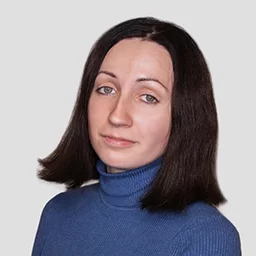
Irma Prus
Content Writer, Copywriter
Irma writes articles and marketing copy for ArchiCGI. Her dream is that more people discover the power of CGI for architecture. Irma is into neuromarketing, ruby chocolate and Doctor Who series.



